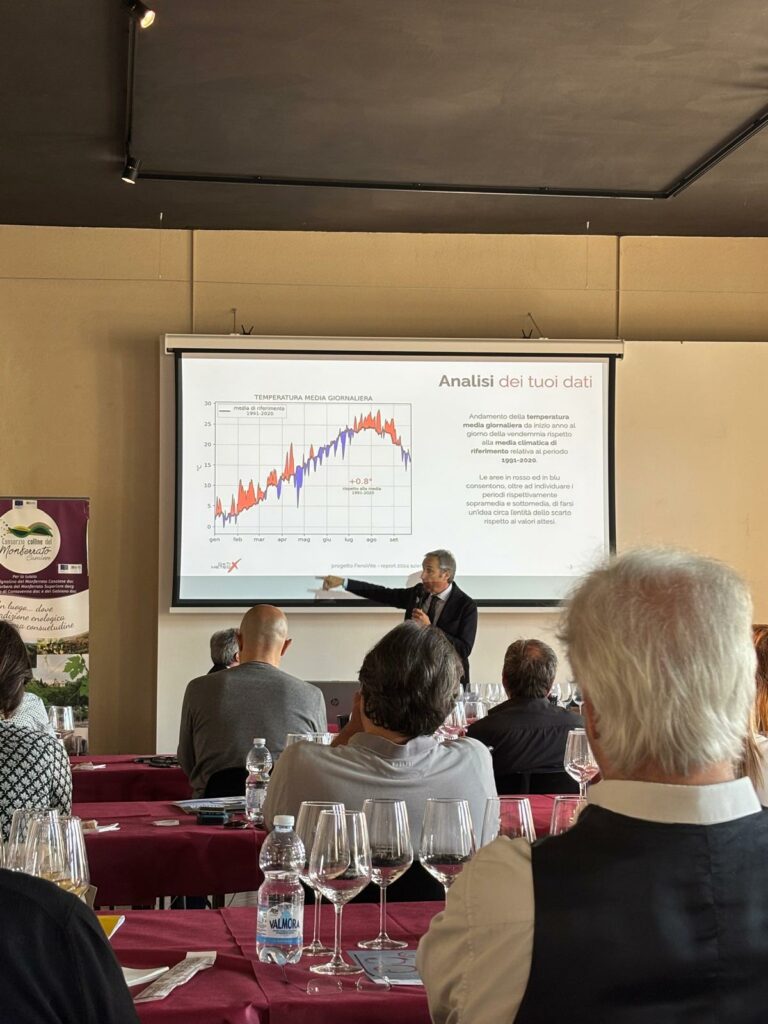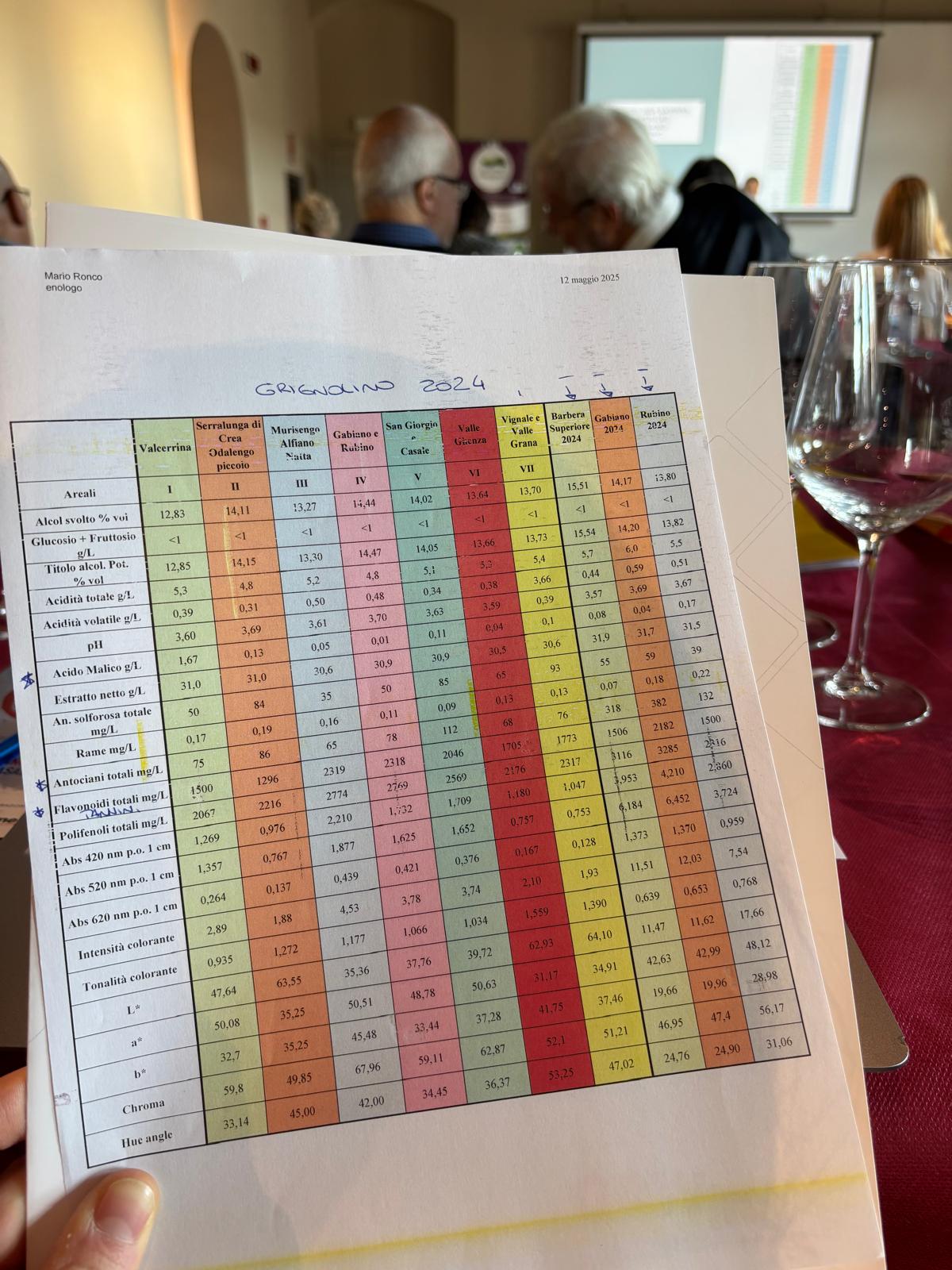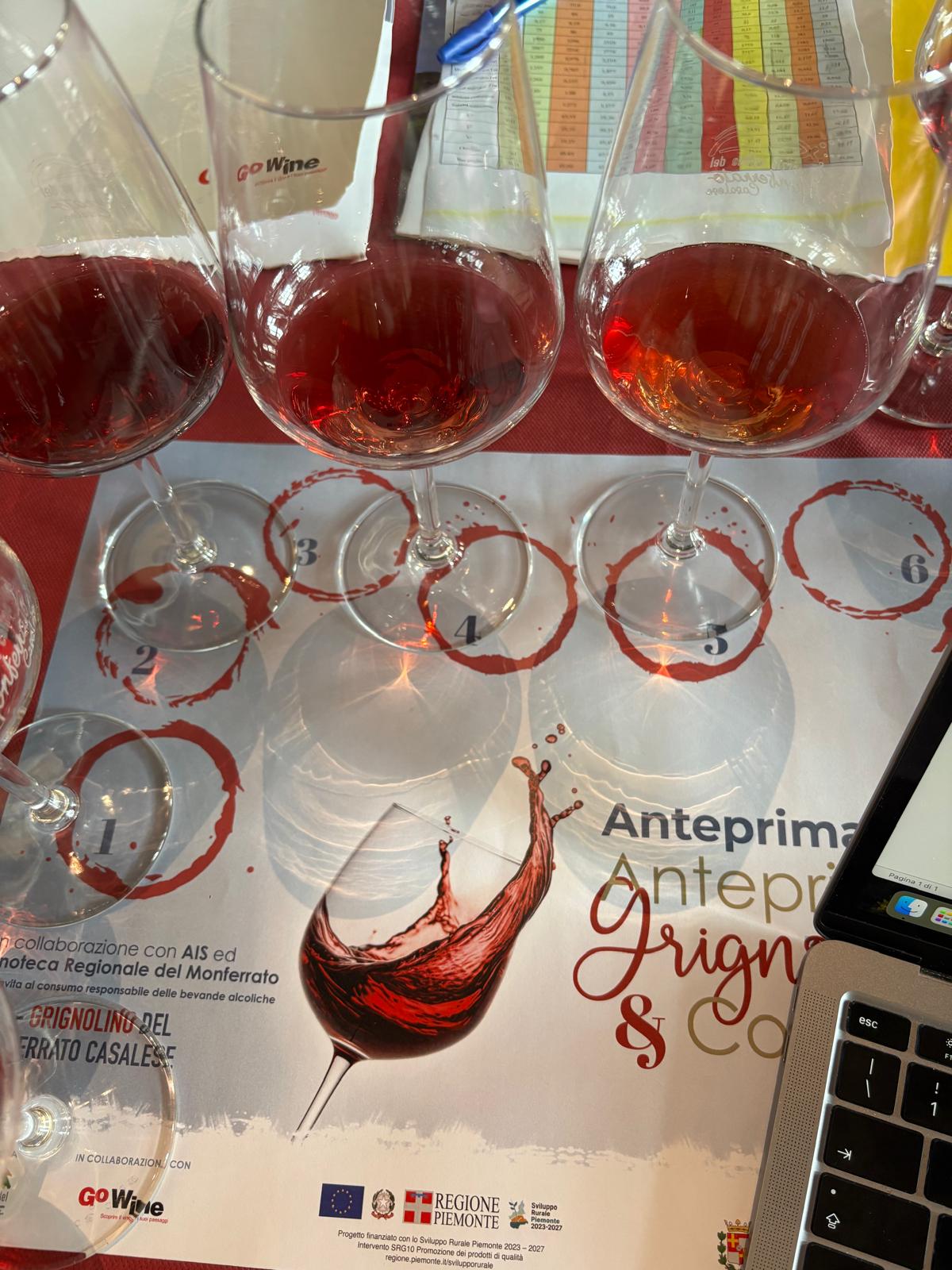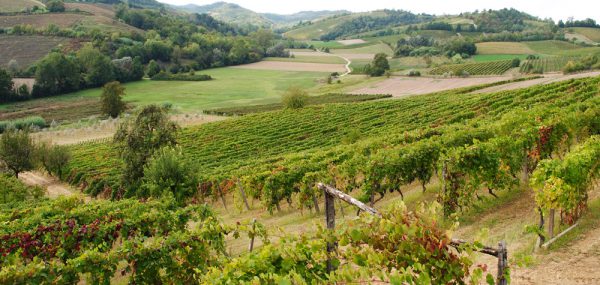
The Official Presentation of the 2024 Vintage of Grignolino del Monferrato Casalese
We bring you the official story of the 2024 vintage of Grignolino del Monferrato Casalese, introduced during the annual Anteprima Grignolino & Co. — an event that has become a beloved tradition in the region. This year’s edition was held in the magnificent setting of Castello di Casale Monferrato, with a presentation led by oenologist Mario Ronco. The event highlighted the unique climatic challenges and the resulting quality expressions of the new vintage, within a rich and evolving wine territory.
The production areas for Grignolino del Monferrato Casalese — Valcerrina, Serralunga di Crea, Murisengo, Gabiano and Rubino, San Giorgio and Casale, Vignale and Valle Grana — each contributed their distinctive terroir influences to the 2024 wines.
A Tradition Reinforced: Anteprima Grignolino & Co.
As emphasized by Mayor Emanuele Capra during the ribbon-cutting ceremony, the Anteprima Grignolino & Co. has become an important fixture in the Monferrato cultural calendar, appreciated for its engaging and diverse format. Organized by the Consorzio di Tutela Vini Colline del Monferrato Casalese, in collaboration with Go Wine, AIS Casale Monferrato, and the Enoteca Regionale del Monferrato (under the PSP 2023–27 Piemonte SRG.10 intervention), the event enriches the region’s appeal and celebrates its rapid growth in terms of hospitality and product quality — especially its wines.
Annalisa Rizzo, Casale’s Agricultural Councillor, emphasized, “These three days are dedicated to wine culture, to be appreciated slowly, sip by sip, in order to truly understand the territory.” Beatrice Gaudio, representing the organizing Consortium, added, “It’s vital that local administrations believe in and support the territory’s growth — when the territory flourishes, the entire supply chain benefits.” She also paid tribute to Domenico Ravizza, one of the founding members of the Consortium.

Masterclass and technical insights
More than 30 professionals — including horeca operators, wine shop owners, and industry journalists — attended the Masterclass led by sommelier Daniele Guaschino and oenologist Mario Ronco, featuring 10 samples from the 2024 harvest: 7 Grignolino, 1 Barbera, 1 Rubino di Cantavenna, and 1 Gabiano.
Ronco described the vintage as one that, “Overall, produced fresh, elegant wines with moderate tannins and immediate drinkability, plus a well-defined color. These qualities were shaped by a climatic reversal compared to the two previous years, which were marked by excessive heat and drought. Spring rains in 2024 helped replenish water reserves and revive the vineyards.”
Grignolino saw high yields and a greater variation in ripening, requiring timely thinning. The wines feature lower total acidity, higher pH, and good results for those who harvested early.
Climate and technological tnnovations in agriculture
Meteorological analyst Luca Leucci, co-founder of Dati Meteo X, presented new approaches to integrating localized, precise climate data into decision-making for agriculture. He highlighted the “Fenovite” project, which combines meteorological data with vine phenological phases, offering producers a scientific method to monitor seasonal progress and compare it with previous vintages.
“Today, too many agricultural decisions are made with generic or imprecise data,” Leucci noted. Fenovite allows the creation of daily and seasonal reports to support individual winegrowers with data that is actionable, location-specific, and fully integrated.
Vintage 2024: rain, cold, and surprises
The 2024 harvest stood out for its climatic instability and the decisive role of vineyard management. After an early bud break due to a warm late winter, May and June brought unusually cold and rainy conditions, ideal for diseases like downy mildew and powdery mildew. Growers had to work tirelessly with frequent treatments and careful canopy management.
Unlike past years, summer never turned truly hot — temperatures remained mild, preventing vine stress and allowing gradual ripening. August and September were stable, with well-distributed rainfall.
The defining moment came on October 3, when over 150 mm of rain abruptly ended the harvest in many areas. Grapes picked before this date were generally of good quality, with ripe aromas, moderate acidity, and pleasing structure. In contrast, grapes left on the vines suffered from botrytis and dilution.

Vintage Profile and Outlook
Rainfall in 2024 totaled over 900 mm, compared to 486 mm in 2023 and 330 mm in 2022 — making it a true “water year.” Yet, the even distribution helped avoid major disruptions. Grapes harvested early produced wines with balanced acidity, moderate alcohol, elegant aromatics, and fresh color expression.
Varieties like Barbera, Grignolino, and Freisa responded especially well, with the majority harvested before the rains. The wines promise refinement and drinkability more than raw power, capturing the soul of the Monferrato hills.
The 2024 vintage can be described as “delicate but generous.” Growers who acted decisively, capitalized on favorable weather windows, and practiced careful vineyard management achieved excellent results. Once again, the vintage confirms a timeless lesson: quality comes not only from the climate, but from knowledge, timing, and thoughtful action.

